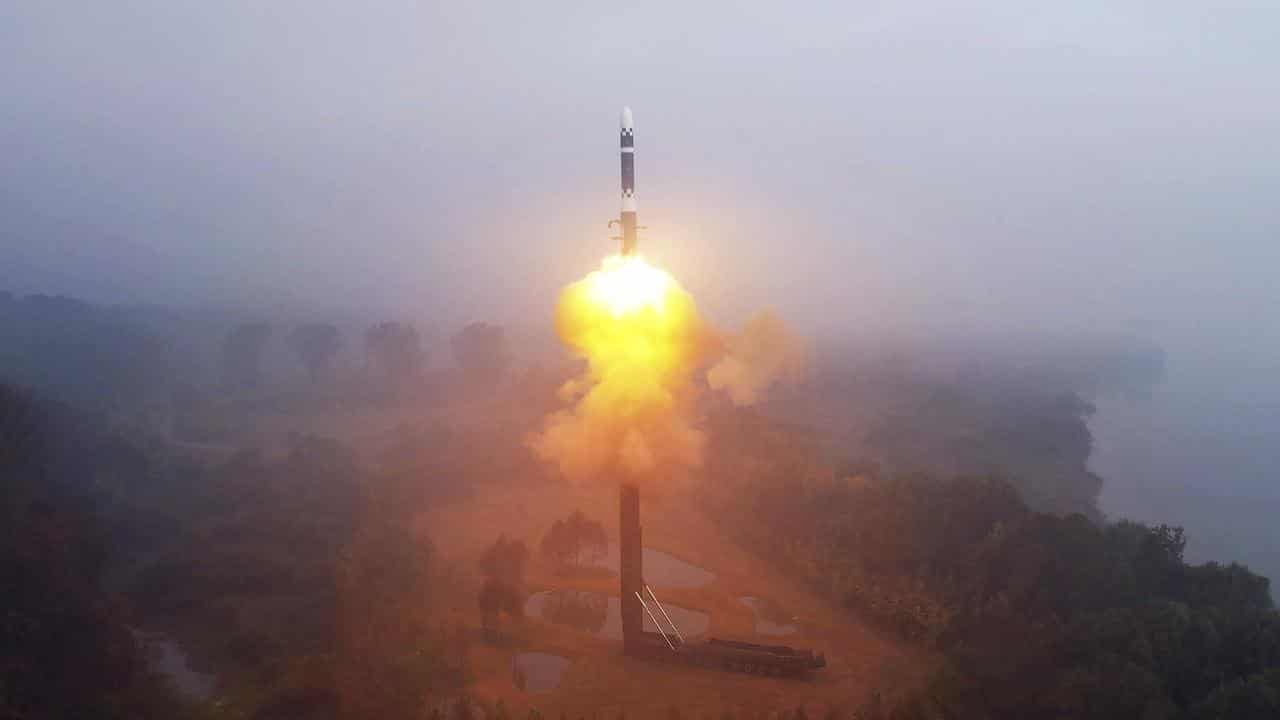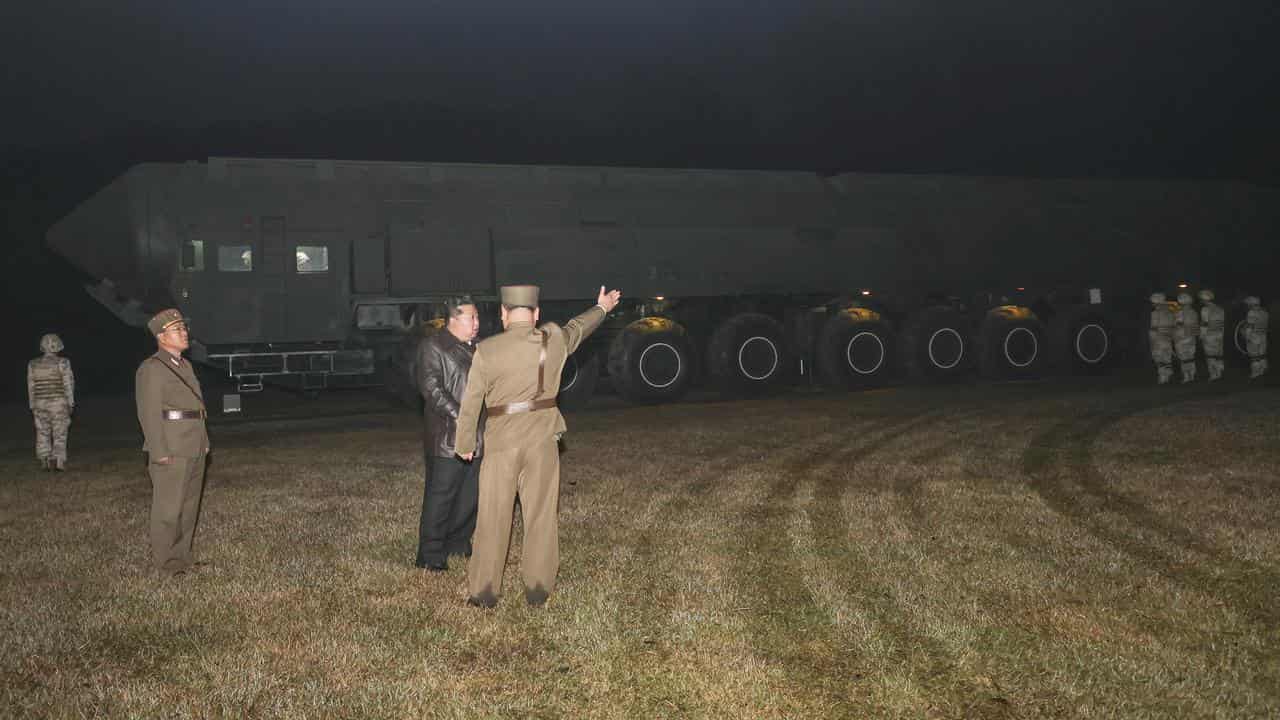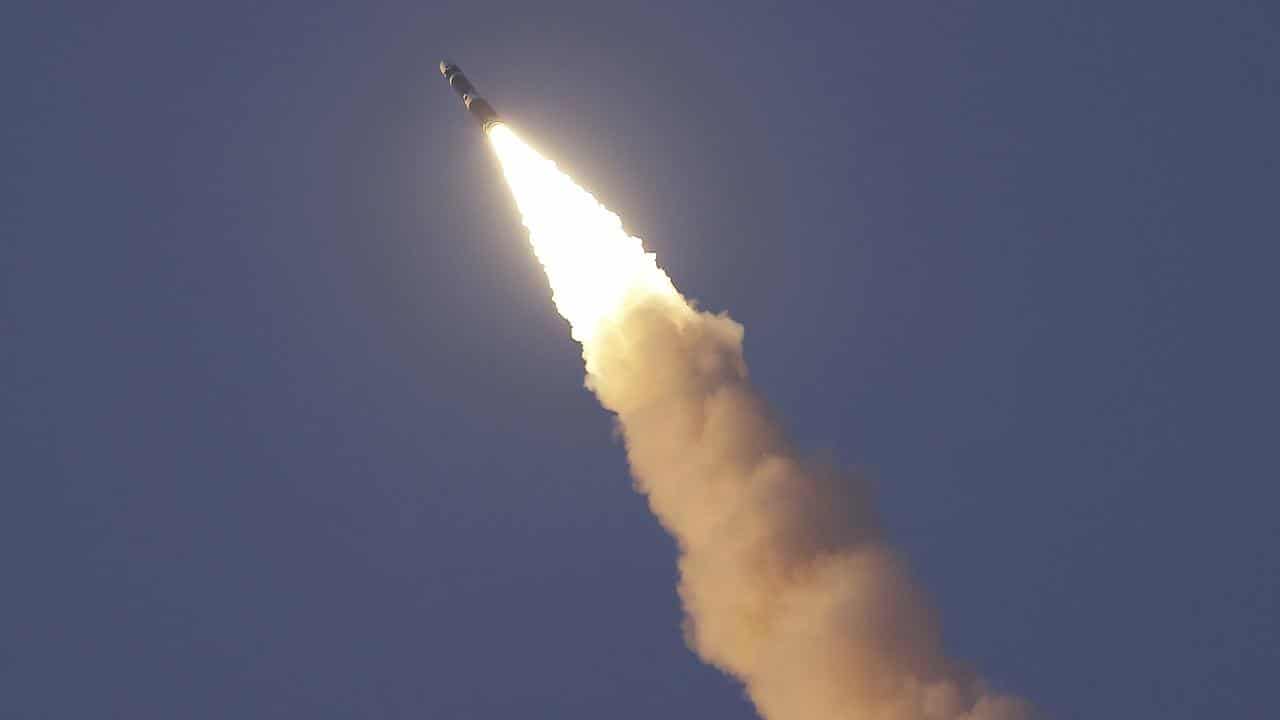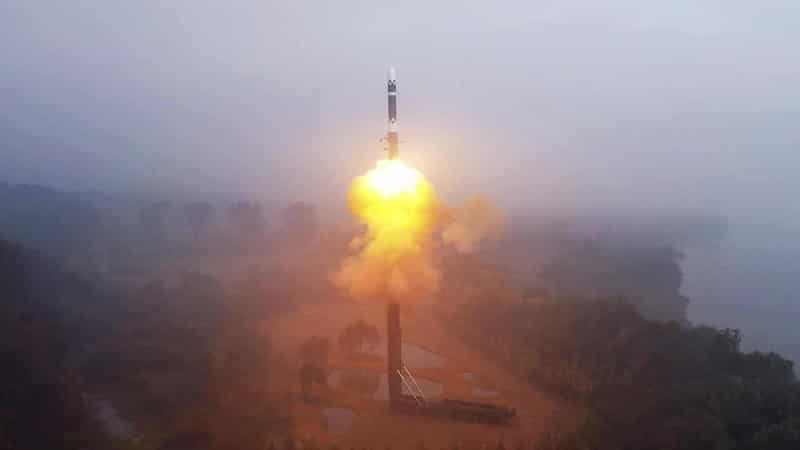
North Korea has flexed its military muscle with the test of a huge new solid-fuel intercontinental ballistic missile dubbed Hwasong-19, state media says, amid international uproar over its troops deployed to aid Russia in Ukraine.
The launch on Thursday flew higher than any previous North Korean missile, according to the North as well as militaries in South Korea and Japan that tracked its flight deep into space before it splashed down in the ocean between Japan and Russia.
State news agency KCNA lauded it as "the world's strongest strategic missile".
While questions remain over North Korea's ability to guide such a missile and protect a nuclear warhead as it re-enters the atmosphere, the Hwasong-19, like North Korea's other latest ICBMs, demonstrated the range to strike nearly anywhere in the United States.
"The new-type ICBM proved before the world that the hegemonic position we have secured in the development and manufacture of nuclear delivery means of the same kind is absolutely irreversible," North Korean leader Kim Jong-un said while overseeing the launch, KCNA reported.

The launch, days before Tuesday's US presidential election, drew swift condemnation from Washington and its allies in South Korea, Japan and Europe, as well as the United Nations secretary-general.
"The missile continues to underwrite the growing credibility of North Korea's strategic deterrent capabilities," said Ankit Panda, a senior fellow at the US-based Carnegie Endowment for International Peace, adding that Kim appeared specifically interested in communicating that message to the United States.
On Friday, South Korea imposed new sanctions on 11 North Korean individuals and four entities over the ICBM test, naming officials for contributing to missile and nuclear development and channelling illegal foreign funds back to the country.
South Korea's unification ministry, which handles relations with the North, said the launch could have been for several purposes, including demonstrating military technology, pressuring Washington and diverting attention from the issue of sending North Korean troops to Russia.
Ukraine's President Volodymyr Zelenskiy blasted what he called his allies' "zero" response to Russia's deployment of North Korean troops for the war in Ukraine, which has also sparked worries that Moscow could provide sensitive military technology to Pyongyang in return.
Russia and North Korea have not denied the troop deployments and have defended their right to help each other.

US Defense Secretary Lloyd Austin said the Pentagon was very early in its assessment phase of the missile launch "and we don't see any indication at this point that there was Russian involvement".
KCNA said the launch did not affect the safety of neighbouring countries and was an appropriate military step in the face of threats from North Korea's enemies.
The Hwasong-19 would deploy alongside the Hwasong-18, which was first launched in 2023 and was also powered by solid fuel, KCNA said.
Solid-fuel missiles do not need to be fuelled immediately before launch, are often easier and safer to operate, and require less logistical support than liquid-fuel weapons.
Photos released by KCNA showed a large, multi-stage missile launched from a canister carried by a transporter-erector-launcher vehicle.
The Hwasong-19 flew of 1001.2km for 85 minutes and 56 seconds before landing in the sea off the east coast of the Korean peninsula, with a maximum altitude of 7687.5km, KCNA said.









